The New Deal
- Was initiated by Franklin Delano Roosevelt;
- He was the 32nd president of the United States;
- He governed from 1933 to 1938;
- His administration inherited the devastation of the great Depression;
- The great depression commenced in 1929 with the stock market collapse.
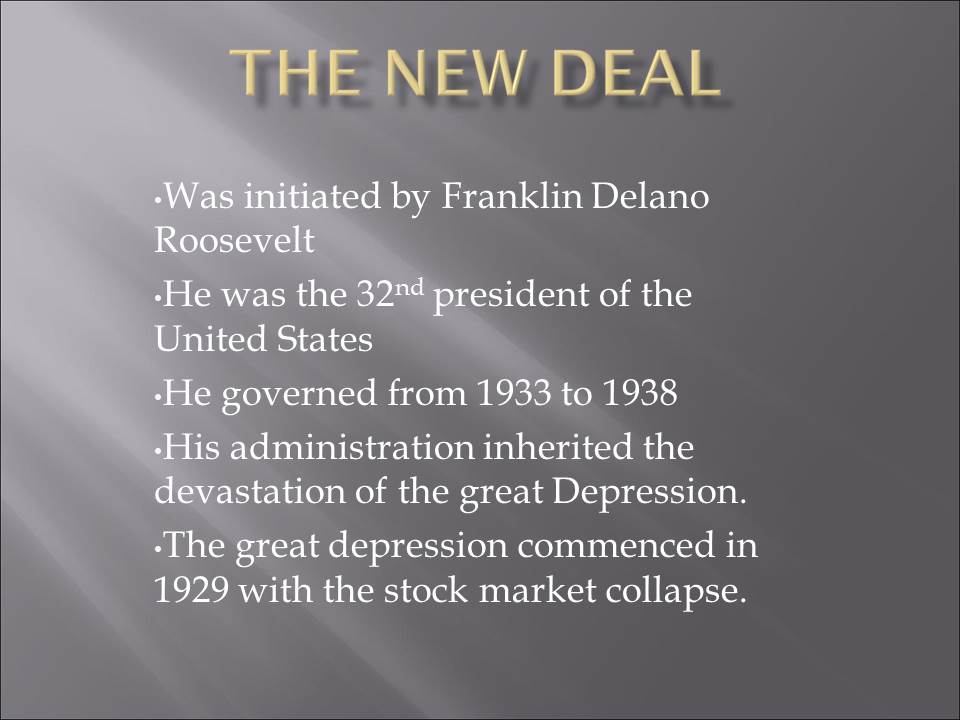
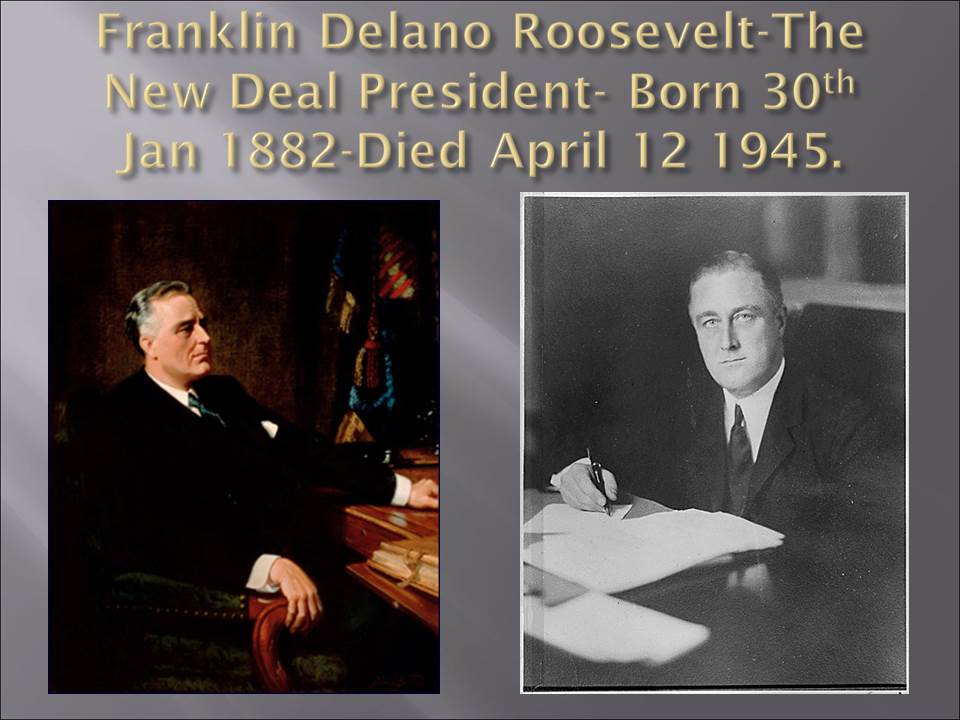
Economic Objectives of the New Deal
The strengthening of the economy though:
- The empowerment of the American people;
- Dealing with the devastation of the great depression through immediate relief;
- Supporting workers;
- Boosting agriculture;
- Boosting the production of electrical power;
- The generation of jobs for the people;
- Encouraging spending so as to stir up the economy;
- Prevent bank panic;
- Restore stock market confidence;
- Protect American industries from total collapse;
- Uphold the emerging economic authority of the United States.
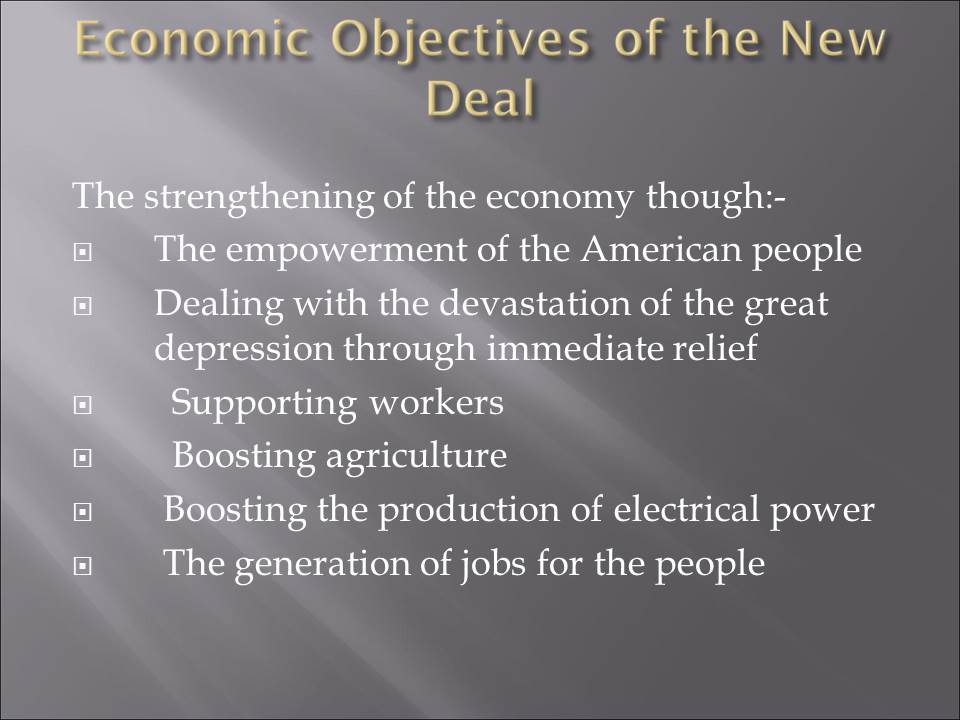

The ills the New Deal Sought to Heal
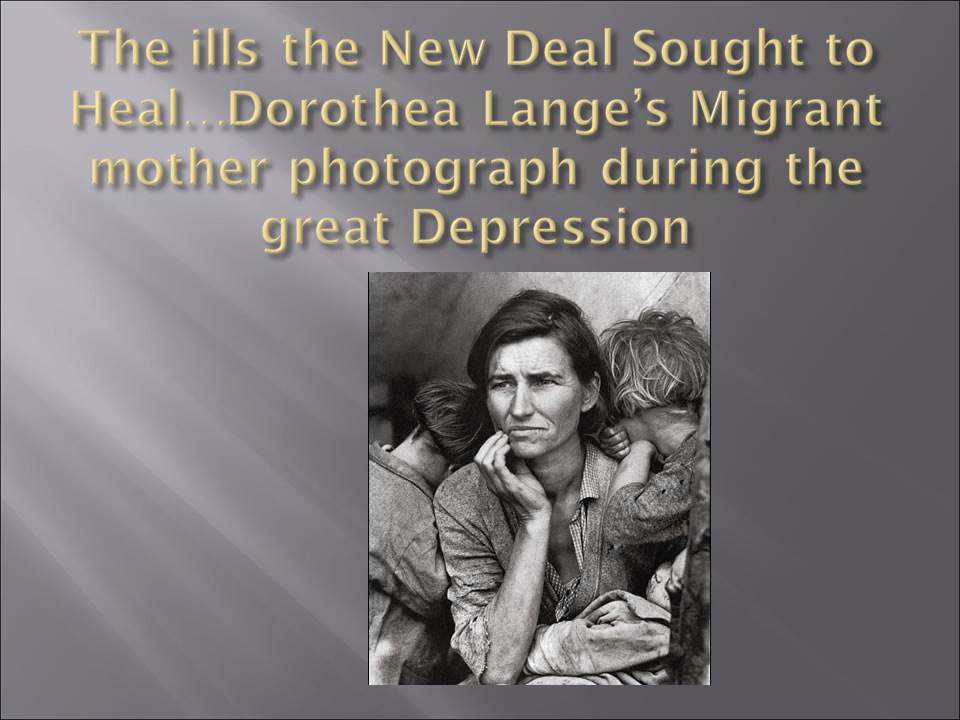


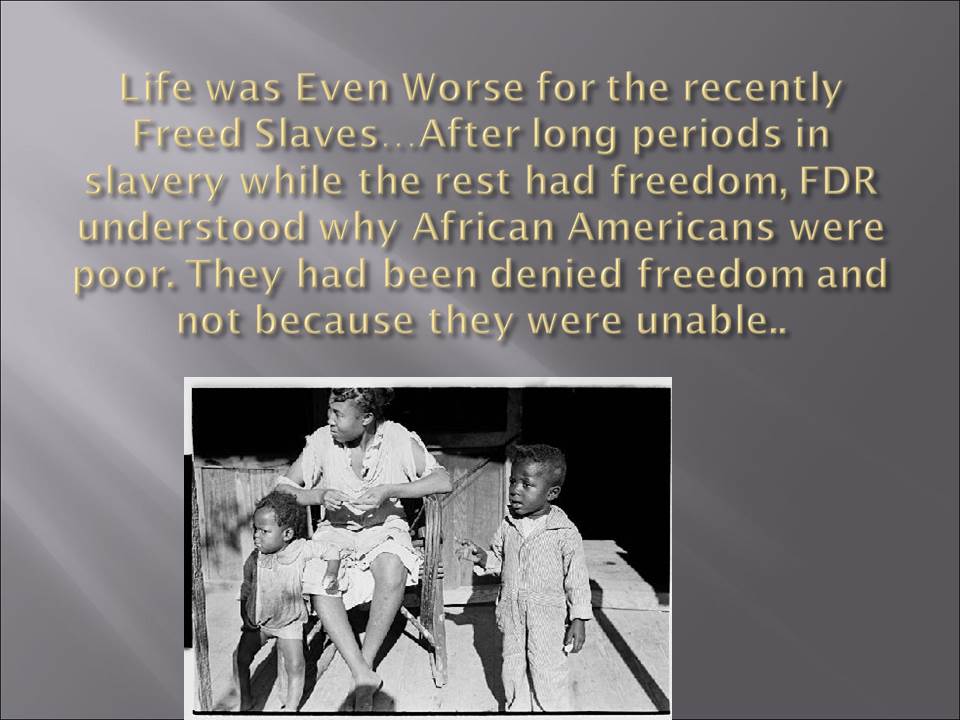
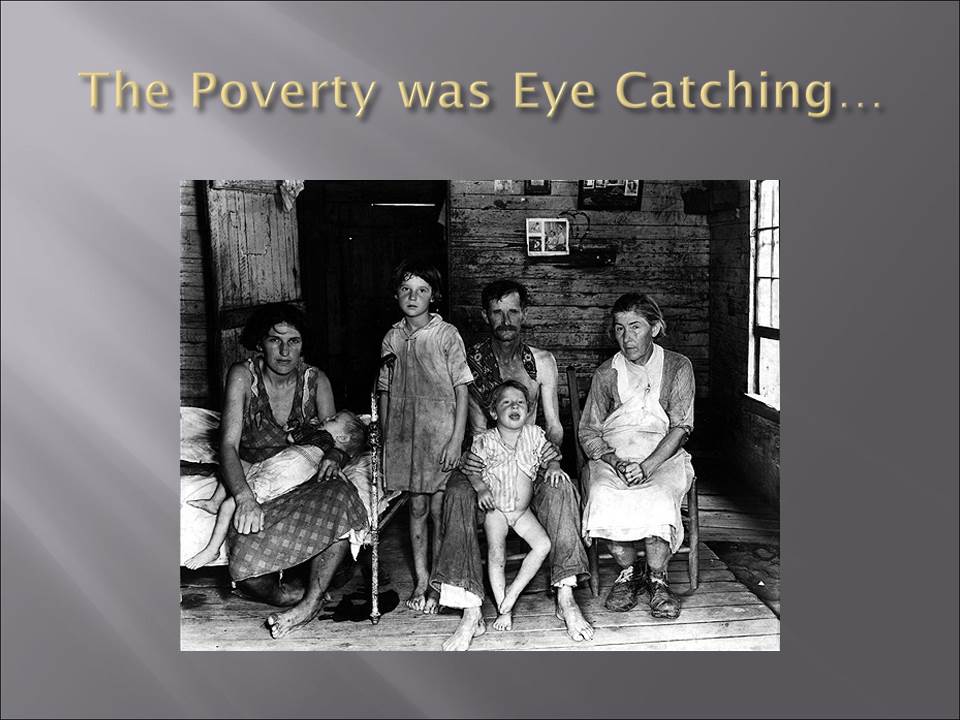
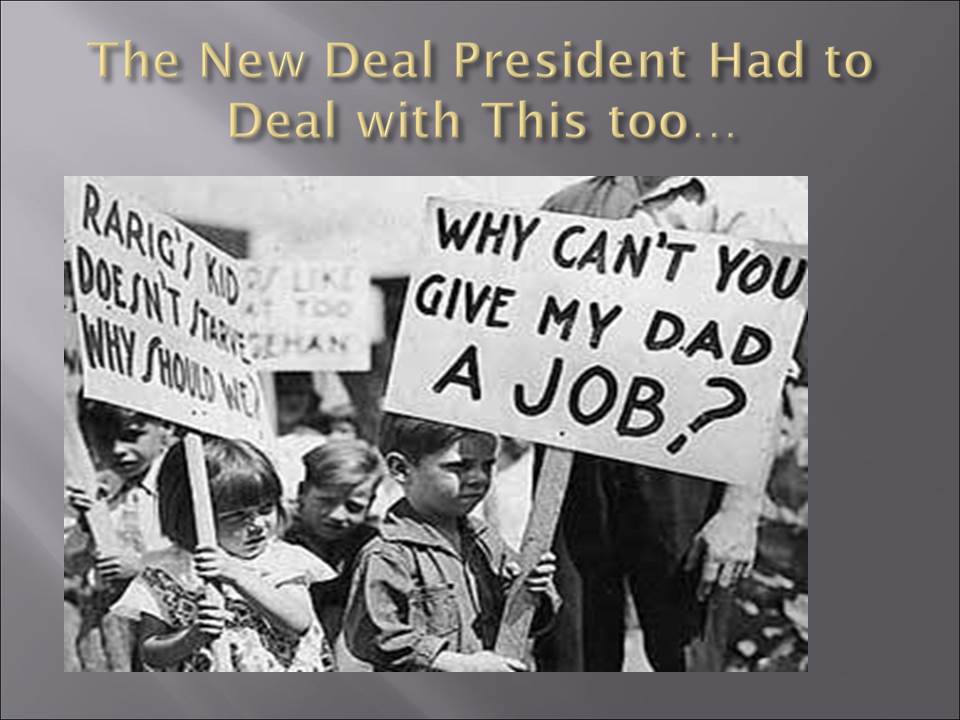
The Strategy Identified To deal with The Economic Concerns of the Time
Putting cash in the pockets of Americans (The Equivalent of President Bush and President Obama’s Stimulus Package).
Government funding for massive projects in various areas such as electric energy, water and irrigation, and industry in general.
Direct support for workers, professionals and farmers.
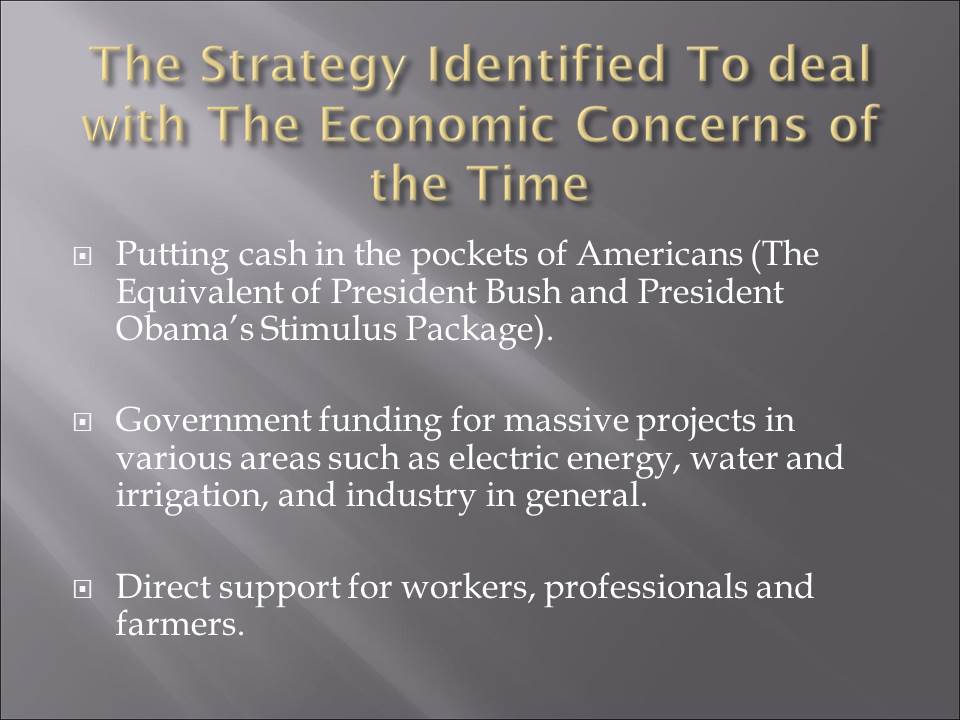
Twelve Major New Deal programs
- Federal Emergency Relief Administration (FERA);
- Public Works Administration (PWA);
- Agricultural Adjustment Administration (AAA);
- Tennessee Valley Authority (TVA);
- Civilian Conservation Corp (CCC);
- Federal Deposit Insurance Corporation (FDIC);
- National Recovery Administration (NRA);
- Works Progress Administration (WPA);
- Rural Electrification Administration (REA);
- National Youth Administration (NYA);
- Wagner Act;
- Social Security Act.
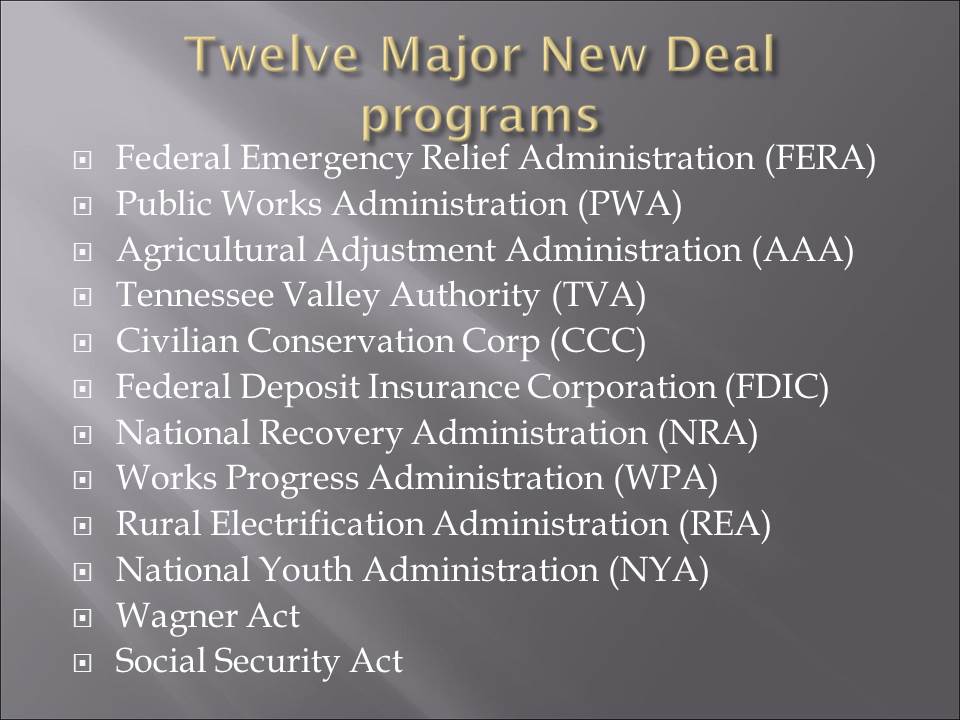
Federal Emergency Relief Administration (FERA)
Was created as the Emergency Relief Administration in 1932 by President Herbert Hoover.
It was given the new name under president Roosevelt in 1933 .
The purpose was to give grants to states to help women start self help projects.
It was replaced by the Works Progress Administration (WPA) in 1935. which also ended in 1943.
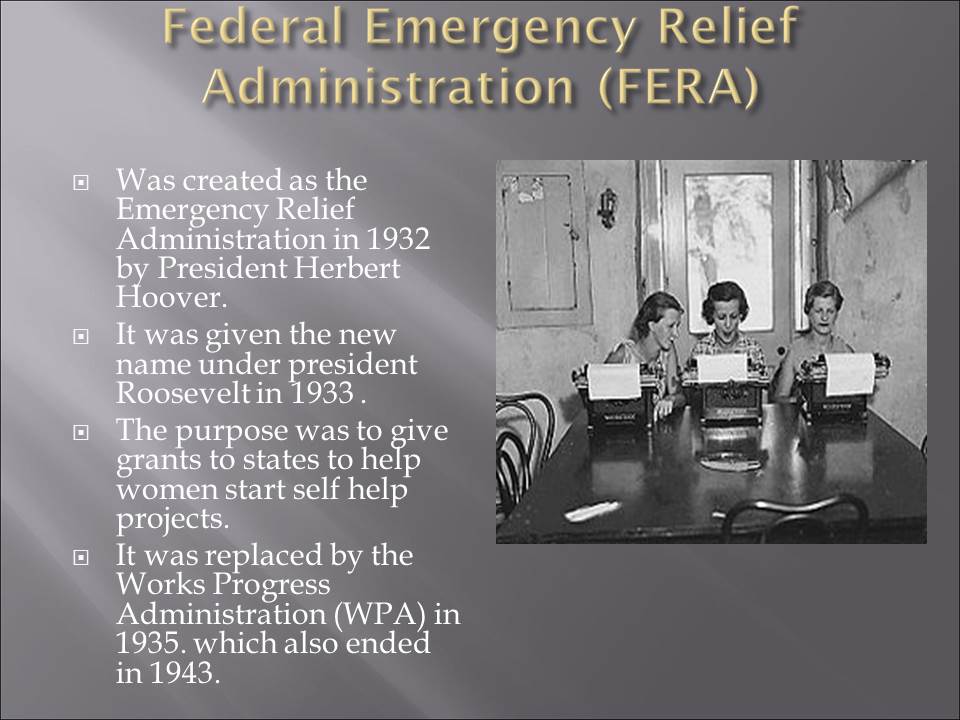
Civilian Conservation Corp (CCC)
- This was established in the 31st of March 1933.
- This was FDR’s first month in office.
- The CCC provided work opportunities mainly for unskilled youth.
- The major work was construction of buildings and working in national parks.
- The program ended on the 30th of June 1943.
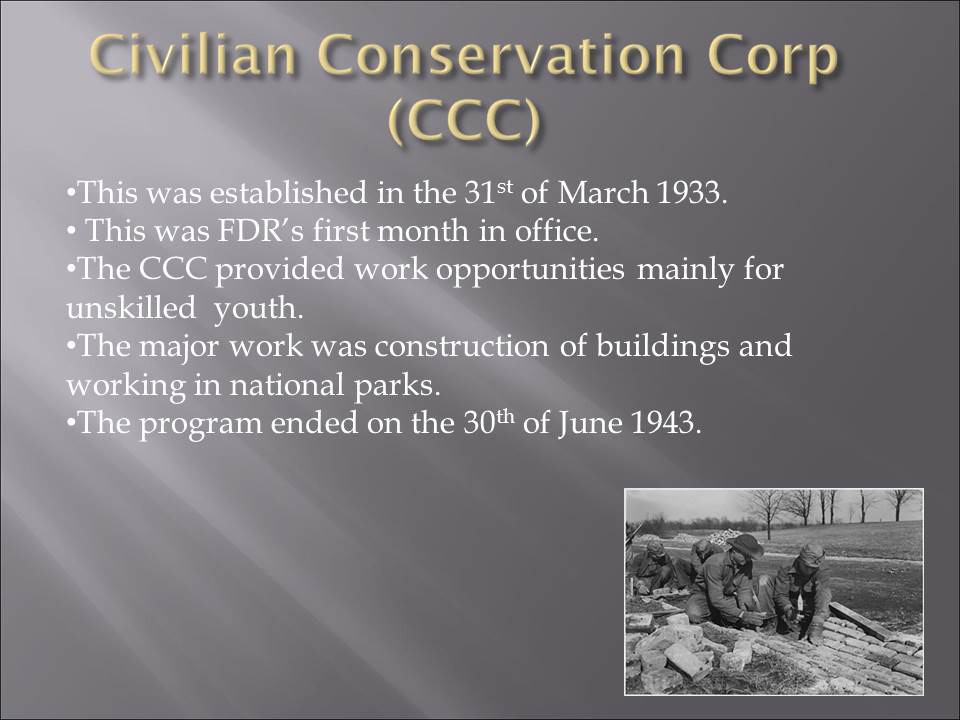
Works Progress Administration (WPA)
It replaced the federal Emergency Relief Administration in 1935 (Taylor 21).
The aim was to create jobs for the people (Taylor 20).
By the time it was ended in 1943,close to eight million jobs had been created by the WPA.
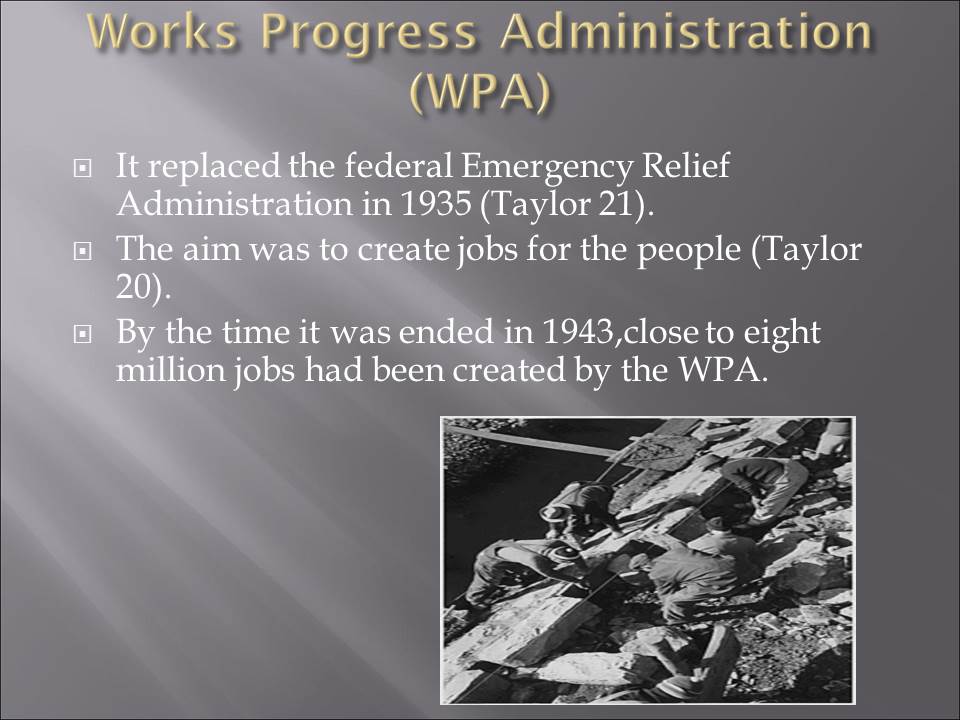
Public Works Administration (PWA)
- Created in response to the great Depression in 1933 by the National Industrial Recovery Act.
- It concentrated on heavy spending in public works such as bridges and roads so as to trigger industrial growth.
- It ended in 1939.
- Below: Fort Peck –Montana, one of the largest dams in the planet resulted from PWA.

Agricultural Adjustment Administration (AAA)
- Created in 1933 to pay farmers to produce less and raise crop value.
- Was amended in 1938 to include new changes that outlawed taxing crop processors.
- The agency still exists.
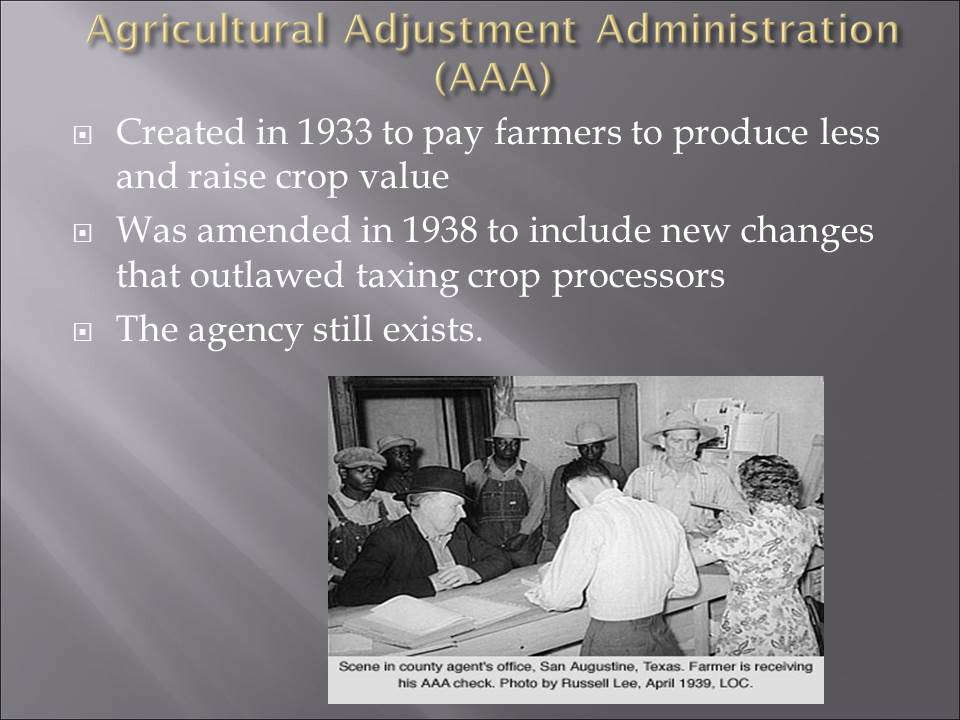
Tennessee Valley Authority (TVA)
- Created on the 18th of May 1933.
- Main objective was to control flooding along the Tennessee River and generate electric power.
- The project still exists.
- Below: Wilson Dam-First to be built under the TVA.
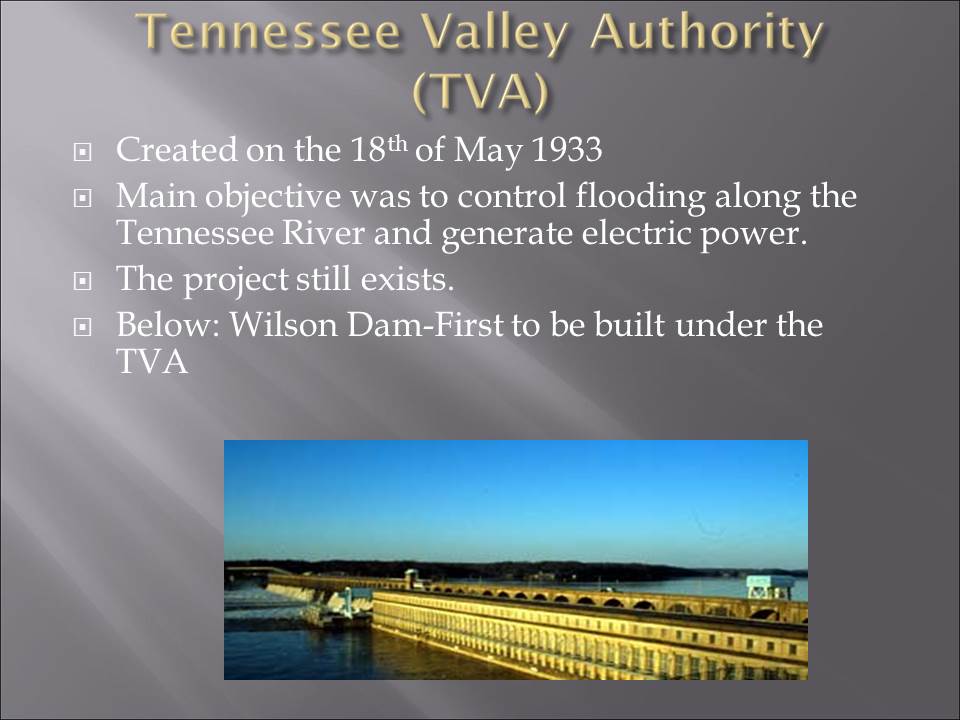
Federal Deposit Insurance Corporation (FDIC)
- Established in 1933.
- Aim was to provide security for deposits for member banks.
- It still exists for the same purpose.
- More duties include supervision of certain financial institutions.
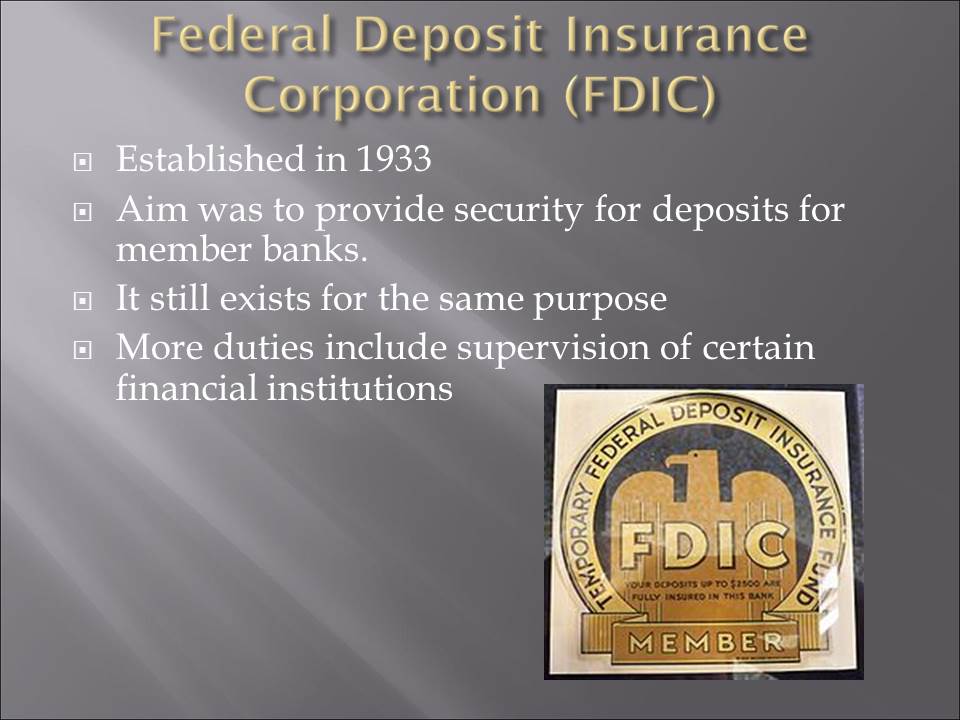
The Wagner Act
- Enacted in 1935 under the sponsorship of Senator Wagner. It is also called the National Labor Relations Act.
- It was formed to protect workers on private firms from being mistreated.
- It was amended in 1947 and it still exists.
- Below: FDR sings the Wagner Act 19 1935.
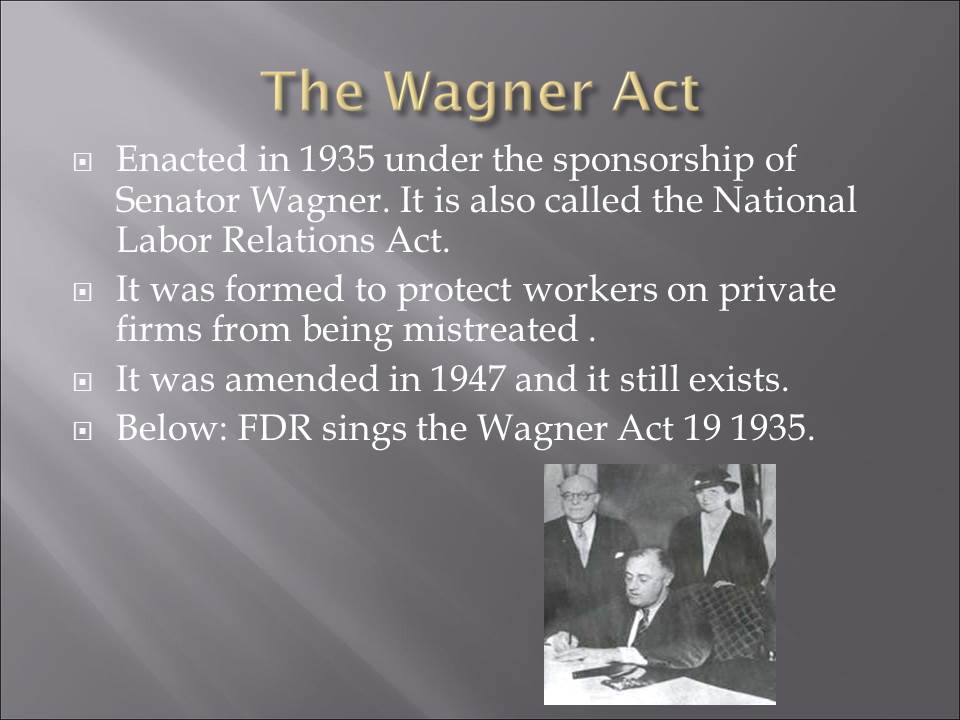
The Social Security Act
- Enacted in 1935 with the aim of protecting the old, needy families, the disabled and the unemployed.
- It has been amended but it basically remains the same. Medicare and Medicaid are part of the act currently.
- It still exists.
- Below: First beneficiary of Social Security-Ida Fuller.
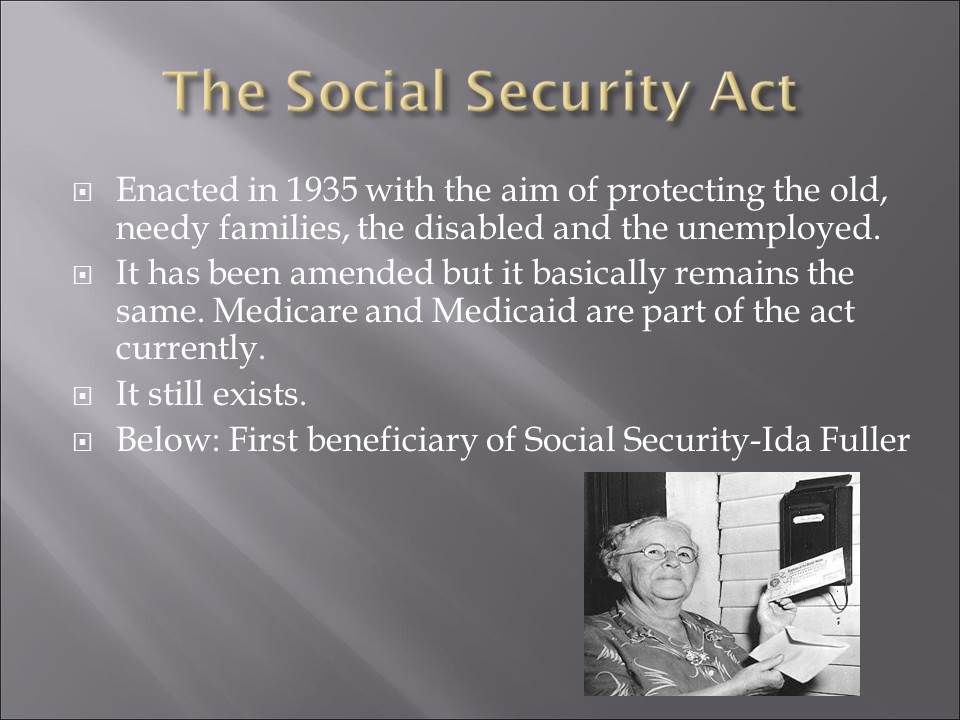
The National Recovery Administration (NRA)
- Formed in 1933.
- Declared unconstitutional in 1935 by the US Supreme Court.
- It died in 1935, but most of its provisions reappeared in the Wagner Act.
- Below: First NRA Director, Mr. Hugh Johnson.
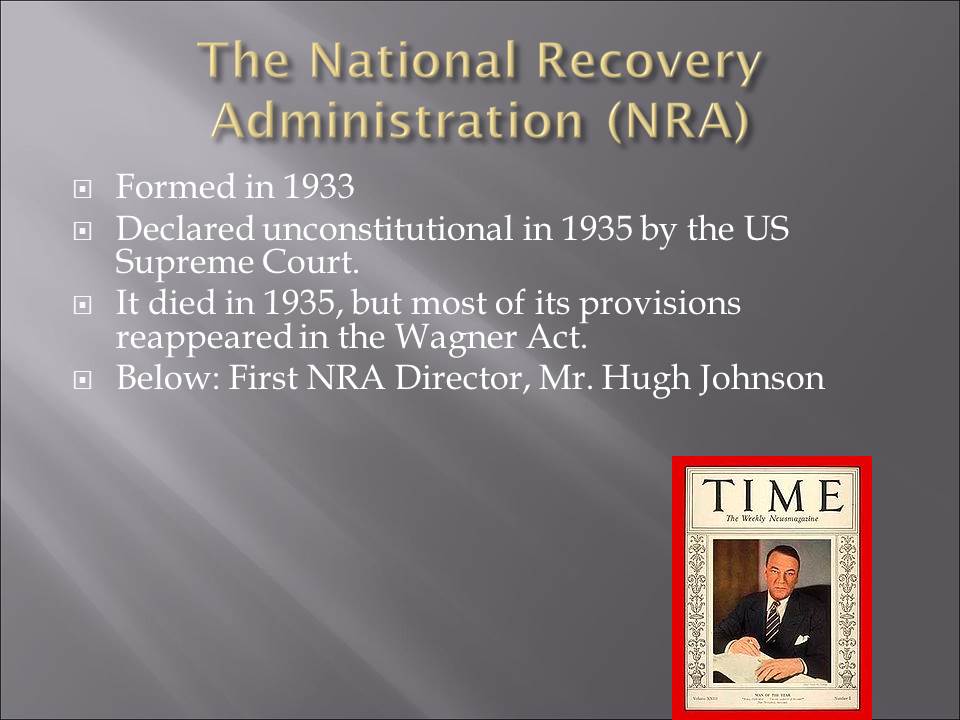
National Youth Administration (NYA)
- Formed as part of the WPA in 1935.
- It’s aim was to offer work study programs for high school and college students.
- It died in 1943.
- Below: NYA Guidance session.
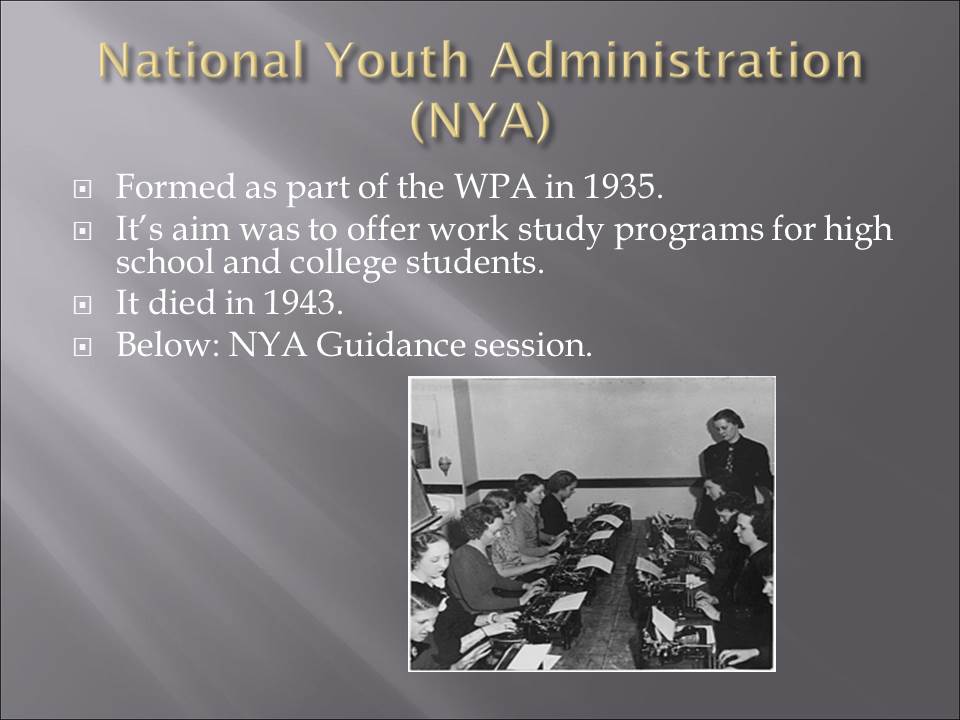
Rural Electrification Administration (REA)
Was created by an executive order in 1935 by FDR and approved by the Rural Electrification Act of 1936 (Brown 19).
The aim was to spearhead the electrification process of rural America (Brown 34).
It worked hand in hand with TVA and other New Deal Job creation ideas and achieved massive success. It was abolished in 1994 and its place was taken by the Rural Utilities Service.
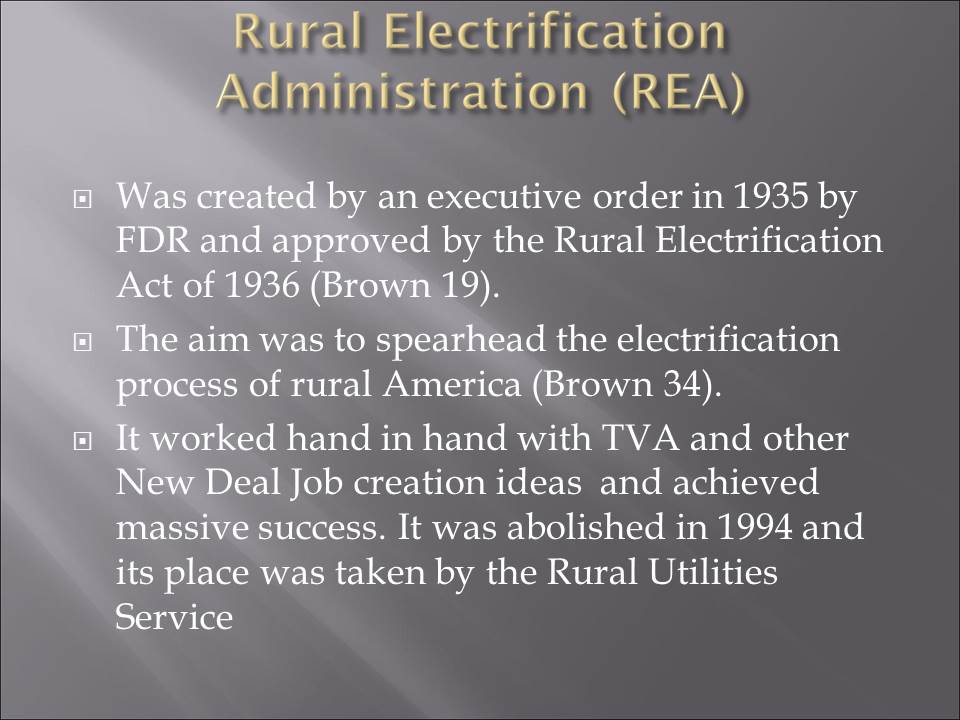
Works Cited
Brown, Deward. Electricity for Rural America: The Fight for the REA (Contributions in Economics and Economic History).New York: Greenwood Press,1980.Print.
Taylor, David . Soul of a People: The WPA Writers’ Project Uncovers Depression America New York: Wiley & Sons, 2009.Print.
www.en.wikipedia.org